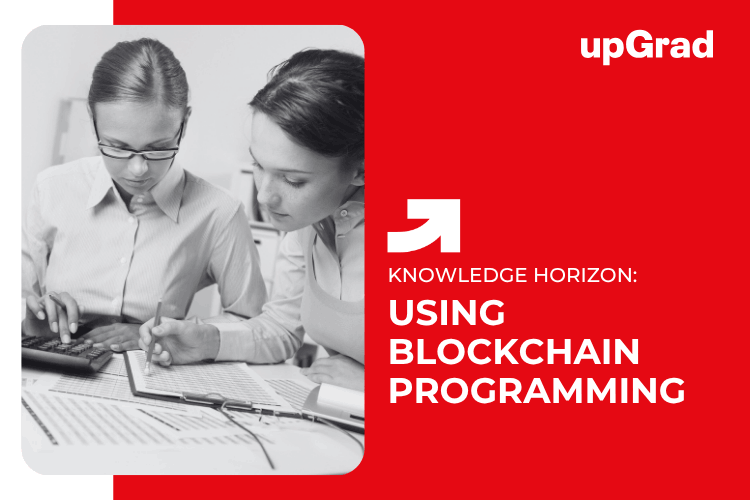Welcome to the future of technology, where decentralization and security combine to revolutionize how we build and interact with applications. Blockchain programming has emerged as a groundbreaking field, offering developers the key to creating secure and scalable distributed applications that can transform industries. If you’re a professional looking to upskill and dive into the world of blockchain development, you’re in for an exciting journey!
In this blog, we will explore the fascinating world of blockchain programming, discovering how it empowers developers to craft robust and tamper-proof applications. We’ll uncover the secrets to building secure applications and explore the essential knowledge required to become a blockchain developer. So, let’s dive in!
What is Blockchain Programming?
Imagine a vast digital ledger that records transactions in a transparent and immutable way. That’s precisely what blockchain is – a distributed and decentralized database maintained by multiple participants. Blockchain programming involves developing smart contracts, decentralized applications (dApps), and other solutions to various real-world problems.
The Power of Decentralization
The underlying strength of blockchain is its decentralized nature. The centralized systems depend on a single point of control, making them vulnerable to single points of failure and susceptible to hacking attempts. In contrast, blockchain operates on a network of nodes, where every participant has a copy of the entire ledger. This distributed architecture ensures transparency, security, and fault tolerance.
Building Secure Applications on the Blockchain
Security is paramount when it comes to blockchain applications. Due to the technology’s decentralized nature, it presents unique challenges and opportunities for developers to create robust systems. Here are some essential security measures to master:
- Immutable Ledger: Transactions recorded on the blockchain cannot be altered, ensuring data integrity and preventing fraudulent activities.
- Public-Key Cryptography: Blockchain uses cryptographic keys to sign and verify transactions, ensuring that only authorized parties can access data and execute smart contracts.
- Consensus Mechanisms: Understanding various consensus algorithms like Proof-of-Work (PoW) and Proof-of-Stake (PoS) is vital for building secure networks.
- Secure Smart Contracts: Smart contracts are self-executing agreements. Writing secure smart contracts is crucial to avoid vulnerabilities that attackers could exploit.

OWASP Top 10: The Blockchain Perspective
When building secure applications, it’s crucial to know the OWASP Top 10, a list of the most critical web application security risks identified by the Open Web Application Security Project (OWASP). Let’s take a look at how these risks apply to blockchain:
- Injection Attacks: Smart contracts should be thoroughly audited to prevent any possibility of injection attacks that could compromise the system.
- Broken Authentication: Implement robust authentication mechanisms to prevent unauthorized access to accounts and sensitive data.
- Sensitive Data Exposure: While blockchain ensures data integrity, you must still handle sensitive data with care and avoid unnecessary exposure.
- XML External Entities (XXE): Blockchain’s data storage format may differ, but guarding against XXE attacks in other parts of the application is essential.
- Security Misconfigurations: Ensure that the blockchain network and smart contracts are configured securely to avoid potential exploits.
- Cross-Site Scripting (XSS): While blockchain transactions are usually safe from XSS, other application components might still be vulnerable.
- Insecure Deserialization: Validate and sanitize inputs to prevent any insecure deserialization vulnerabilities.
- Broken Access Control: Define and enforce proper access controls to prevent unauthorized actions within the application.
- Using Components with Known Vulnerabilities: Regularly update and patch all blockchain components to avoid known vulnerabilities.
- Insufficient Logging & Monitoring: Implement logging and monitoring mechanisms to detect and respond to suspicious activities.
Conclusion
Congratulations! You’ve taken the first step towards mastering blockchain programming and building secure and scalable distributed applications. The world of blockchain offers endless possibilities, from transforming financial systems to revolutionizing supply chains and beyond. You can be at the forefront of this technological revolution by upskilling in blockchain development and adhering to robust security practices.
Remember, the key to success lies in continuous learning, experimenting, and staying updated with the latest trends in this ever-evolving landscape. Happy blockchain programming!








